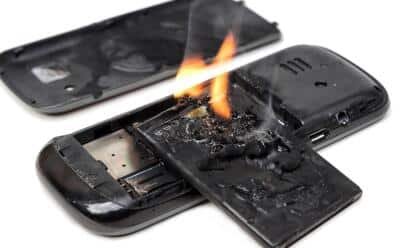Troubleshooting Common Issues with Lithium Batteries
With the rapid development of science and technology, the scope and function of lithium batteries have long been self-evident, but in our daily lives, lithium battery accidents are always endless and plague us from time to time. In view of this, we have specially compiled the cause analysis and solutions of common problems of lithium-ion batteries, hoping to provide you with convenience. Below is a simple chart, you can have a quick check on your troublesome issues of lithium battery.
| Phenomenon | Reasons | Solutions |
|---|---|---|
| The charger indicator light is not on | 1. Poor contact between the power plug and the socket | 1. Check the power plug and socket to make good contact |
| 2. The charger is damaged | 2. Replace the charger | |
| The battery pack cannot be charged normally | 1. Protection board overcharge or discharge protection | 1. Turn off the power lock for 0.5 min |
| 2. The fuse is blown | 2. Replace the supporting fuse | |
| 3. The charger is damaged | 3. Replace the charger | |
| 4. The battery pack cable is disconnected | 4. Send it to the maintenance department | |
| 5. Loose contacts of the charging port | 5. Replace the charging port | |
| The battery pack cannot be discharged normally | 1. The power lock switch is not turned on | 1. Turn on the switch |
| 2. Loose contacts of the discharge port | 2. Send it to the maintenance department | |
| 3. The battery voltage is too low | 3. The battery is fully charged, and it will be sent to the maintenance department again abnormally. | |
| Insufficient battery discharge capacity | 1. The battery is not fully charged | 1. Fully charged, send it to the maintenance department again abnormally |
| 2. Poor contact with the discharge port | 2. Check the power plug and socket to make good contact | |
| 3. The battery consistency is not good | 3. Send it to the maintenance department | |
| 4. Excessive use temperature | 4. The temperature returns to normal | |
| Abnormal discharge stopped | 1. The use temperature is too high, and the temperature protection switch of the protection board is turned on. | 1. Set aside at room temperature for 30 minutes 2. Reduce the discharge current and set aside for 2min |
| 2. The discharge current is too large, and the protection board is over-current protection. | ||
| 3.Short circuit outside the battery pack, short circuit protection |
The voltage is inconsistent and the individual is low
1.High self-discharge causes low voltage
The self-discharge of the battery cell is large, so that its voltage decreases faster than others, and the low voltage can be eliminated by storing and detecting the voltage.
2.Uneven charge causes low voltage
When the battery is charged after detection, the battery is unevenly charged due to inconsistent contact resistance or the current of charge in the detection cabinet.In short-term storage (12 hours), the measured voltage difference is very small, but the voltage difference is large during long-term storage. There is no quality problem with this low voltage, which can be solved by charging.Store the voltage for more than 24 hours after being charged in production to measure the voltage.
Internal resistance is too large
1.Caused by differences in testing equipment
If the detection accuracy is not enough or the contact resistance cannot be eliminated, the internal resistance of the display will be too large. The principle of AC bridge method should be used to test the internal resistance instrument for detection.
2.Storage time is too long
Lithium batteries are stored for too long, resulting in excessive capacity loss, internal passivation, and large internal resistance, which can be solved by charging and discharging activation.
3.Abnormal heating causes large internal resistance
During the processing of the battery cell (spot welding, ultrasonic waves, etc.), the battery is abnormally heated, causing the diaphragm to thermally close, and the internal resistance is seriously increased.
Lithium Battery Swell
1.Lithium battery expands when charging
When the lithium battery is charged, the lithium battery will naturally expand, but generally not more than 0.1mm, but overcharging will cause the electrolyte to decompose, the internal pressure will increase, and the lithium battery will expand.
2.Expansion during processing
Generally, abnormal processing (such as short circuit, overheating, etc.) causes the internal heating to be too large, the electrolyte decomposes, and the lithium battery expands.
3.Expansion during circulation
When the battery is circulating, the thickness will increase with the increase of the number of cycles, but it will basically not increase after more than 50 weeks. Generally, the normal increase is 0.3~0.6mm, and the aluminum shell is more serious. This phenomenon is caused by normal battery reactions.However, if the thickness of the shell is increased or the internal material is reduced, the expansion phenomenon can be appropriately reduced.
Battery Power-down after Spot Welding
The voltage of the aluminum shell battery is lower than 3.7V after spot welding, generally because the spot welding current is too large to cause the internal diaphragm of the battery to breakdown and short circuit, causing the voltage to drop too quickly.
Generally, the spot welding position is incorrect. The correct spot welding position should be at the bottom or on the side marked “A” or “—”. Spot welding is not possible on unmarked sides and large surfaces.In addition, some spot-welded nickel strips have poor weld-ability, so a large current must be used for spot welding, which makes the internal high-temperature resistant tape unable to work, causing a short circuit inside the battery cell.
The battery power-down after spot welding is also partly due to the large self-discharge of the battery itself.
Battery explosion
There are generally the following situations in which a battery explosion occurs:
1.Overcharge explosion
The protection line is out of control or the detection cabinet is out of control, causing the charging voltage to be greater than 5V, causing the electrolyte to decompose, a violent reaction occurs inside the battery, the internal voltage of the battery rises rapidly, and the battery explodes.
2.Over-current explosion
The protection circuit is out of control or the detection cabinet is out of control, causing the charging current to be too large, causing the lithium ions to be too late to be embedded, and the lithium metal is formed on the surface of the electrode sheet, penetrating the diaphragm, and the positive and negative electrodes are directly shorted, causing an explosion (rarely occurs).
3.Explosion when ultrasonic welding plastic shell
When ultrasonic welding the plastic shell, the ultrasonic energy is transferred to the battery cell due to equipment reasons. The ultrasonic energy is very large. The internal diaphragm of the battery melts, and the positive and negative electrodes are directly shorted, resulting in an explosion.
4.Explosion during spot welding
During spot welding, the current is too large, causing a serious internal short circuit to explode. In addition, the positive electrode connecting piece is directly connected to the negative electrode during spot welding, causing the positive and negative electrodes to explode after a direct short circuit.
5.Over-release explosion
Over-discharge or over-current discharge of the battery (above 3C) can easily dissolve the negative electrode copper foil and deposit it on the diaphragm, causing the positive and negative electrodes to short circuit directly and explode (rarely occurs).
6.Explosion when vibration falls
When the battery vibrates violently or falls, the internal pole piece of the battery is misplaced, and it is directly severely shorted and explodes (rarely occurs).
Low Battery platform low–3.6V
1.Inaccurate sampling of the inspection cabinet or unstable inspection cabinet cause the test platform to be low.
2.The ambient temperature is too low to cause the platform to be low (the discharge platform is greatly affected by the ambient temperature)



I’ve got a problem with my 48v 1000w lit ion battery it charges fine I use it for a bike I converted I ride my bike it will stop working all power to the bike will cut off when I keep hitting the switch on and off it will start running again anyone had this problem?
maybe it’s the controller problem